|
Anyone who's lived in Southern Alberta for more than a season or two recognizes the challenges to gardening with our unpredictable weather and short growing season. With that in mind I came up with a list of my personal picks for the coming growing season. In addition to being fast-frowing foods, these picks are based on a number of other criteria I felt were cornerstones of abundant food crops, such as storeability, flavour, level of maintenance, and others. That said, personal taste is always a factor in the final decision on what makes the list. Nonetheless, I hope you'll find this useful and inspiring. Maybe you have a list of top veggies you'd like to share in the comments below. Please do let me know about anything you think I shrould try in the future too, as I love experimenting! Here's my top veggie picks for 2023 (annuals)... 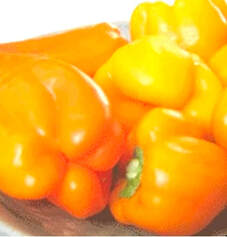 Ted's Top 10... 10. "Milena" Pepper - These mature to a sweet orange and are on the list for their all-round resiliency. They are one of the fastest-maturing varieties of pepper out there. Very vigorous and sturdy plants that grow well in all sorts of climates! 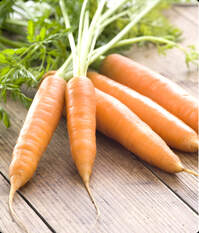 9. "Little Finger" Carrots - These do well in the heavier soils of Alberta as most carrot varieties require a looser, fluffier soil medium in order to prosper. With a relatively quick turnaround time, these babies can be harvested about 55 days after planting. Carrots also have better storability than many other veggies. 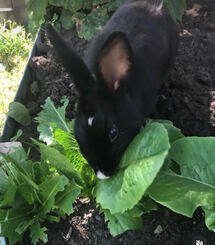 8. Romaine Lettuce "Coastal Star" - Very sweet and crunchy, great on sandwiches and in salads, with another quick turnaround time (65 days). Lettuce is also a great choice for partially shady areas. I chose Romaine because it tends to maintain its crunch factor for a longer period than most other lettuce varieties. (oh, and the bunnies love it too :-) 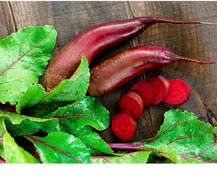 7. Beet "Cylindra" - Beets are super for antioxidants and other health factors, they pickle, ferment and store exceptionally well, and the greens can be eaten--this is why they made this year's list! Why did I choose the cylindrical variety? Easier to peel and to slice! 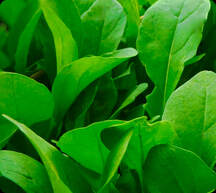 6. Arugula "Astro" - For an extra kick to your meals and another quick-growing green, Astro Arugula can be the star for the burst of flavour you may be looking for in salads and sandwiches. This particular variety forms leaves that are not as deeply lobed as others, which means you actually get more leaf and not so much stem. 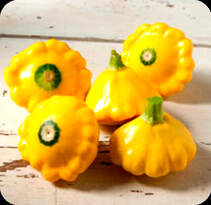 5. "Pattypan" Squash (Also known as Scallopini) - Don't feel like waiting an entire growing season for your squash? These miniature beauties are ready to be picked by mid July - early August! Plus their small size makes them much quicker to cook than the larger varieties without the need to chop them up. Very tasty and tender as well--great for roasting or frying. 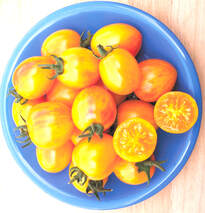 4. "Sunrise Bumblebee" Cherry Tomato - For an abundant harvest that lasts from early July to your first frost, these are a real crowd-pleaser, especially for kids! Sweet with a hint of citrus, you are sure to pick these all summer long, while enjoying the orange and yellow stripe patterns expressed on their thin skins. These plants are vining and indeterminate, so be ready to stake them as they can grow to 6 feet or higher. 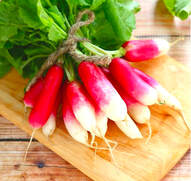 3. French Breakfast Radishes - I planted a batch of these babies on September 15th of 2022. They were ready to eat on Oct 15th that year. If you like radishes, these crunchy, mildly spicey veggies grow wonderfully in the cooler times of the growing season.  2. Black Krim Tomato - Tomatoes make it this high on the list for their versatility both in cooking and in storage. Plus they are jam-packed with nutrients. Used in so many cultures throughout the world, they can be cooked, eaten fresh, made into sauces, salsas, bruchettas, curries, the list is endless. For storage you can pressure can them, ferment or pickle them and even dry them! I have picked the Black Krim variety for its abundant production (I've had 25 tomatoes averaging 1 lb each from one plant), as well as its resiliency in Alberta. Plus these beauties have such a depth of flavour! 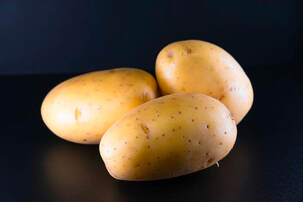 1. The "Melody" Potato - No matter which variety of potato you choose, they are number one on this list for nearly every reason we have for growing food. They grow pretty much everywhere on the planet, are very low-maintenance, disease resistant and quick growing. Another reason to grow this nutritious food staple is their ability to store over long periods. This is the perfect choice for novice gardeners. I have selected the Melody variety in particular because of its drought-tolerance--a great strength to have in the Southern Alberta climate! Honestly, though, its pretty tough to make a mistake with nearly any variety you choose to go with, so pick something that tastes good to you and your family! So what are your favourites? Are any on this list? What do you feel I missed? I know I will likely have some new ones for next year. Whatever you choose, I hope find some new treasures you decide to keep for years to come!
Happy growing, Ted
1 Comment
If there's a single struggle that I've had people seek advice for when it comes to growing food in this part of the world, it has to be the short growing season. Sure, you can alsways add more mulch, create micro-climates and attempt to start plants indoors before the last frost, but it's not going to give you fresh peppers in February. Honestly, I think the single biggest impact we can make in terms of food abundance in this part of the world has got to be installing passive solar greenhouses. 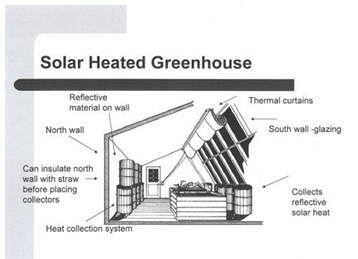 If you're not already familiar with the concept, a passive solar greenhouse is like a conventional greenhouse, but it utilizes as much as possible the sun's rays as it's heat source. The glazing is usually facing close to south (in the northern hemisphere, and north in the southern hemisphere), while the back of the house is to the shade side and has as much insulation as possible--up to R50 or more in some cases. Alternatively, the back may also be attached to a structure such as a home or other already heated structure to bypass the need for further insulation. There may also be additional heat-capturing devices such as black, water-filled tanks to further extend the ability of the structure to catch and store heat energy and radiate it out through the night, along with many more innovations.
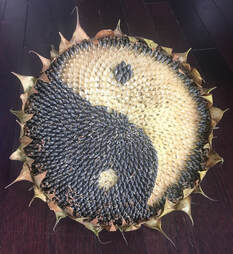 Okay, so I'm gonna plant a seed--not a real one this time, but an idea. See, the thing is, I honestly don't feel that we value seeds enough. Don't get me wrong, I definitely don't want to see the price of seeds go up, but I'm saying I really think most of us don't see just how powerful a seed can be--let me explain. So many of us look for a way to invest (stocks, bonds, GIC's, etc.) Well, what about seeds? If you had 1 dollar and knew that you needed food, you could spend that one dollar on a tomato. You might eat the entire tomato, which is alright because you're hungry and hey, who doesn't enjoy a ripe juicy Brandywine? But let's say you decide to spit one of the seeds out and save it to grow next season. 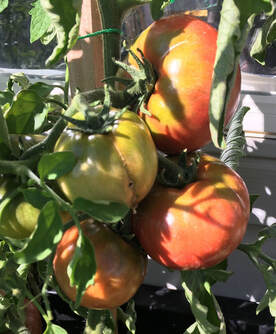 Okay, so you could have saved 50 seeds and still eaten the tomato, but for the sake of easier math, let's just do one seed. So next year you plant the seed and get 20 tomatoes. You could have gotten 30 or more, but again, let stick with the easier math. This time you take out 10 seeds per tomato (cause you learned from last year that this might be a good idea). So for year number 2 you have 200 tomato plants. In year 2 of growing, (let's just say it's a slow year) each plant produces an average of only 5 tomatoes--I think you see where I'm going with this. What's the average return on investment for mutual funds? Ten percent? Twelve percent? You remember you started out with a 1 dollar tomato and by the end of your second year of growing, you have 1000 tomatoes. No matter which way you slice it, that is an amazing investment. Yes, I know, you need to find enough pots and potting soil to plant them all in (no you don't, just plant them in the ground), and you need to water them (well yes, although nature does a fair bit of that herself, and there are ways of conserving soil moisture), and you need enough space for all your plants (OK so how many square metres of lawn are in your neighbourhood? How about concrete?)  The message here is that investing a small amount of time, money and energy in fruit production pays back big time, and this can be done with so many fruit varieties, but so few people are doing it! If you think my estimates might be a little on the high side, well I suppose once in a while you might have a bad year or choose a less-than-productive variety. However, as an example, I spent about $5 on good seeds this year. That's all. Once my plants were just around 2 feet in height, I gave away about 30 of them to neighbours, friends and family. I kept only 9 of the very best ones and composted the rest. So out of those nine plants, I ended up with over 50 pounds of tomatoes this season. So $5 basically helped feed myself, my neighbourhood, and family this summer--now that's a good investment. So much of our food comes from planted seeds and so many seeds end up being thrown out or wasted. Just think, right now a lot of the food that will be on our plates next year is in seed form somewhere out there now--I hope someone is going to plant them! 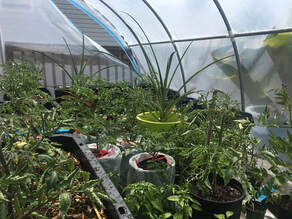 So this year I decided to give away some tomato plants to members of my community, and you want to know what's interesting? The number one question I received form people was not about how to care for tomatoes, nor really anything to do with growing them at all. The most frequently asked question was, "Why are you giving them away?" My reasons for doing this were very, very simple and I'll get to that in a moment. More importantly, however, what I learned from the fact that this question was so common, was that I need to do this more often! 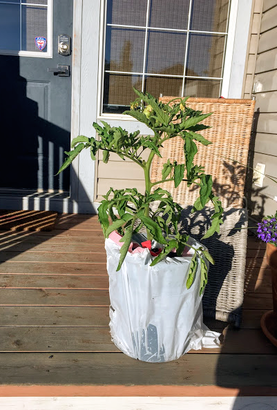 I have always grown tomato plants in the past, but generally I would plant a few, then more or less leave them to fend for themselves. Sometimes I would get some decent crops, sometimes not so much, but I never really focused on them in any big way. This year I decided to really put some energy into my tomato into this endeavor. I wanted to try my hand at maximum tomato production. After purchasing from an online seed supplier, I set to work. So being that altogether I had over 100 seeds, I figured I should plant them all--I hate wasting seeds! I had plenty of space at my window for some tiny seedlings. Besides, being that I had been so involved with many communities throughout this city, this was the year that I made it my mission to finally connect with my very own neighbourhood for a change, so why not give some away and share the joy if I could! There you have it. That is the very simple reason why I was giving away tomato plants--because I could, and because it might make people happy. Anyone else in this position would do the same! So a couple of months passed and those tiny seedlings needed transplanting. My original plan was to move them outdoors once frost season had subsided, but the frost was still around, so... time to build a greenhouse! (I'll write about how I built my 100 square foot greenhouse for less than $200 in another blog). The greenhouse saved me a lot of time and effort from having to move the plants and all that was really left was the watering. By the end of May I was ready to give to my community and I connected with members via the community gardening Facebook page among other avenues, as well as simply dropping plants off at neighbour's homes along my street. I even offered a plant to a passer-by, walking her dog, who was very thrilled at the random offer. As for the tomatoes I have left in my greenhouse, we are ready to harvest a couple of 1-pounders already! So far, my biggest tomato production year is looking fantastic. Happy growing everyone!! T 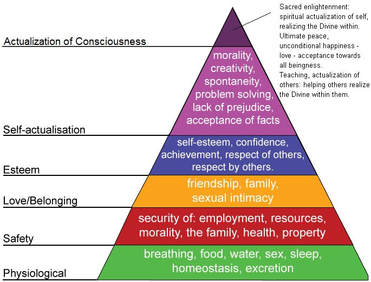 Fig 1. Maslow's Hierarchy of Needs Fig 1. Maslow's Hierarchy of Needs Anyone who knows me understands that I am more than someone who enjoys growing my own food. Among other things, at heart, I am an avid student of psychology, sociology, culture and the human spirit. In my university years I studied in these fields extensively, and continue to immerse myself in these areas to this day. Up to this point, the majority of what we have seen in most publications on the subject of Permaculture have mainly discussed the topics of food production and other forms of both small and large-scale agriculture and have done so thoroughly. This is a logical start. However, once we have the basic human needs (food, water, shelter, etc.) met, what is the logical next step for permaculture? Some readers may be familiar with the fact that although the term permaculture was originally formulated with the combination of the words “permanent” and “agriculture”, it has more recently been expanded to encompass the words permanent and “culture”. The following is an account of where I personally would like to see this field grow in the coming decade, followed by just a few examples of how we might make that happen. With this in mind, it is the culture aspect that I would like to focus on for the purposes of today’s blog. If we have a look at Maslow’s Hierarchy of Needs model (fig. 1), we can see how the first 2 layers of the pyramid speak to those needs already discussed. These have to do with basic human survival, and it makes sense to ensure these needs are met before we can begin seeking answers to the needs in the higher levels. Assuming that we can satisfactorily meet the physiological and safety needs, we then have the freedom to explore ways in which we can satisfy the more mental, emotional and spiritual needs of our human culture. Understanding the sociology of industrialization and the negative impacts it has had on us, is part of what makes reconnecting with nature so important. There are so many barriers that have been created—both conceptual and physical—which separate us more and more from our natural roots and from each other. Permaculture has the capacity to help us transform this, and will be one of our major assets in breaking down these barriers over time, and all of this can only happen with more frequent, meaningful connections with nature and with each other. 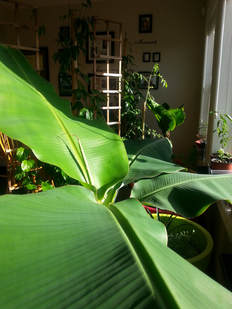 Fig. 2 Indoor Garden by Southwest-Facing Windows Fig. 2 Indoor Garden by Southwest-Facing Windows So what are some ways to achieve this, especially in places on this planet which spend more than half the year in winter? Well, there is nothing wrong with dressing up and heading outside for a brisk winter walk, but there are some other paths to inviting nature into your own home at any time of the year. An indoor tropical garden is one way and this can also be an area in which you might grow food, as well as being an opportunity to connect with nature. In order for this to happen, however, the home needs to be designed with at least a few south or west-facing windows. More extravagantly, one might consider constructing an atrium or passive-solar greenhouse. This is where people in the field of architecture, interior design and engineering must be introduced to the concepts of permaculture. It is my wish to see more and more homes designed with large south-facing windows or atriums, not only for growing plants, but also for the purposes of tremendous solar gain in extremely cold (yet unusually sunny) places like Calgary. In both instances we are inviting nature into our homes and making the connection necessary to foster healthier psychological, emotional and physical development. Urban planning is another area which is due to expand its scope of expertise into the field of permaculture with the goal of designing our urban areas to foster more human-nature interaction. Rather than designing patches of parks and so-called “green spaces” into communities, these neighbourhoods would be better designed with nature as a fundamental part of everyday living. Each natural area should continually flow from one to the next, instead of being broken up by roads and highways. This might necessitate tunnels and bridges or maybe wildlife overpasses as solutions, but would be worth it in the long run. 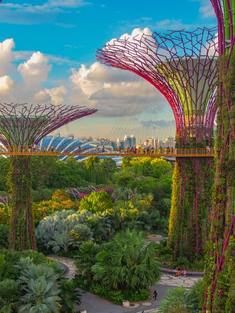 Fig. 3 Example of blending art and Nature in a Public Space Fig. 3 Example of blending art and Nature in a Public Space If this is too large an undertaking at first, we may want to start with smaller ideas that connect us as a culture to each other in the field of urban planning, such as creating gathering places—places that facilitate human interaction (i.e. placemaking). The concept of placemaking has already firmly taken root in major urban centres across North America and elsewhere. It involves the creation of meeting places in city parks or streets where people can come to simply mingle and interact without the need for expensive technology or other energy consuming amenities. It often involves an artistic or interactive cultural element as a catalyst to human interaction. This is where people are not just passing through, but are given a reason to stay for a while and enjoy something new, to start conversations, find reasons to smile, debate, or be entertained. What is great about placemaking is you can even start in your own backyard—or front yard! Whether we are talking about placemaking, creating more connective natural spaces, or bringing nature into your own home design, the physical and social benefits are only limited by our imaginations and creativity. I will expand more and go into greater detail on all of these topics in future blogs. For now, more on the subject of reconnecting with nature can be found on my July 2014 article on Ecopsychology and Permaculture. Of course regular outdoor activities such as hiking, camping, swimming and so on, have been a consistent part of our summer regimen ever since the kids could walk. Last summer, however, I thought it might be nice for the kids to have an additional activity they could engage in during times when the weather might not be as pleasant, and maybe something that might keep them very loosely in the flow of their studies for the two months they are out of school.
I asked each of my kids to choose a creature they were interested in and create a slide show they could present to us when they were finished. That was basically it. Everything else was more or less up to them. The number of slides, the deadline, and how and when they researched everything was left in their hands. Had I pushed my children to do this or pressured them to complete the project I'm sure I would have been defeating the purpose. I wanted them to own this project and to take pride in it. Although my daughter, being in grade 5, had some classroom-related experience in this, creating a slide presentation was a brand new experience for my second-grade son. I made it clear that I would be there for guidance, but only if they required it. There were points I had my doubts these projects would be completed at all if I were not following up consistently with my two kids—that it would easily get buried among the high energy chaos of summer. However, as it turned out, every few days the kids would ask me if they could borrow my computer and work on their projects. This was a good sign. Also, instead of trying to push them in any way about the projects, I simply made a point of expressing a genuine interest in what they were doing. After all, who wouldn't be interested in seeing their child engaging in a self-driven venture that would help them grow? Ironically, when I asked to see any part of the projects, my interest was met with "Sorry Dad, you'll have to wait until it's finished!" --Well I'm glad I did. By summer’s end both my kids had a completed project, ready to show. We got out the popcorn and my son presented his slideshow on wasps, followed by my daughter who proudly showed her presentation on squids. Here are some points I think helped to keep my kids motivated in this project:
This month I figured I would keep the blog relatively simple and provide just a few healthful recipes we have conjured in our kitchen over the years. Hope you enjoy!
Ted's Ginger Kombucha --This recipe, even though it is hidden on the Prairie Sage website, seems to be one of our most popular pages visited judging by the web traffic I see. Ted's Ginger Syrup --This is actually part of the recipe listed above, but on its own is very versatile as well. Can be used as a sweetener with a nice spicy kick to it! This is the simplest of the recipes I will list on today's blog. Salad with a Twist! --This one comes from a Valentine's Day post I composed a few years back. Nonetheless, a sexy way to freshen up the holiday season, or any time of year! Veggie Burger Recipe -- A nutritionally well-rounded burger with some real taste, unlike many veggie burgers on the market! Butter Chicken, Yes! -- Ok, so this may not be the healthiest recipe on our list, what with all the butter and some demarera sugar, but one of our family favourites! Feel free to check back on our Recipes page for future ideas for great meals!  Photo Courtesy Aaron Burden Photo Courtesy Aaron Burden The holiday season has been notoriously known for sending our diets on a downward spiral and making us think twice about our eating habits. Conveniently, some of the healthiest edibles can be found in the land around our homes just before the ground heads into its winter freeze. This fall, being that I was on more of a health kick than usual, I began to notice how much I would miss having the opportunity to nibble on healthful veggies from the garden and in farmers markets and so I decided to go into winter storage mode. I looked around for items that had a decent shelf-life, and as time was short I wanted to choose plants I could process quickly, so instead of pickling or canning, I opted for the much more simple method of drying. I wanted things I could easily add to any meal--especially something like a smoothie. I was now on a drive to find nutrient-dense foods I could turn to powdered supplements. First on the list: Dandelions I, like a lot of people, am not particularly fond of the taste of dandelions. However, when powdered and mixed with other foods, the taste can be barely noticeable and even enjoyable. Either way, it is a worthy addition to a smoothie just for the health benefits. Now many people are aware of the positive effects dandelion has on the liver and as a blood tonic. However, even as a replacement to your average salad green, dandelions are agreeably superior. Looking at the nutritional table below, dandelion surpasses spinach in about 80% of major nutrients. Not too bad for something you can find for free and much closer to home than the grocery store! (Continued below...) 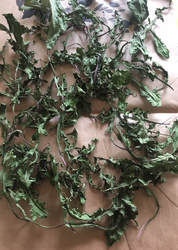 The second and third items on my list and also heavy-weights in the realm of nutrition, were fireweed and mint leaves. I chose these mainly because of their abundance and availability around my home and that they would also dry and store well. Mint, by the way, also adds a refreshing flavour to virtually any recipe. You may still be able to find a few sprigs of any of these healthful herbs still growing in Calgary at this time of year if they have not yet been damaged by frost. If you live in an area with a longer growing season, chances are they will still be abundant--so now is the time to harvest before winter fully kicks in. The Next Steps
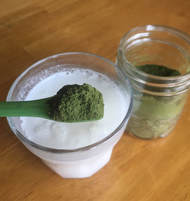 3. Finally, place them into a grinder (any spice grinder or coffee grinder will do), and grind away until all large particles are converted into a fine powder. 4. Enjoy! One small scoop of any of these (less than a teaspoon) will be plenty for the day. Remember these are dried leaves so a teaspoon can amount to a couple of handfuls of fresh leaves! You can add these herbs to virtually any recipe. Raw recipes are generally better as the majority of the nutrients will not be lost due to the cooking process. Blending fireweed or dandelion with yogurt, for example, is also a way to introduce a green-tea-like flavour to those dishes. My children love the taste of mint powder in vanilla ice cream! Feel free to experiment with other edible herbs that grow nearby. If you want to look up nutritional data, an online resource I use is http://nutritiondata.self.com. Hope you enjoy and feel the health benefits. Also please share with the rest of us what tasty concoctions you come up with yourself! Each week until Tour Time, Prairie Sage will be profiling one of the sites on our 2017 tours list. For more information on our complete tours listing, and to register, check out the 2017 Calgary Permaculture Tour page! 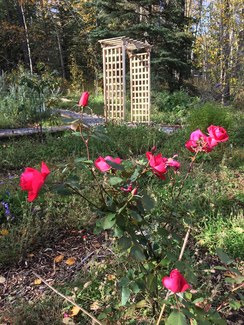 This year we welcome Senses of the Soul to the tour lineup, and not only will they invite us for a feast for the senses and the spirit, but also a dinner feast after the tour is complete! This will be the final stop for 2 out of our 4 tour days this summer (July 29th and August 12) during the Sustenance for the Spirit tour! The Senses of the Soul Botanical Sanctuary and Farm is a ten acre parcel of land where one can reconnect with nature, and find the stillness and quiet needed to hear the voice of the soul. Included in the garden are 7 distinct areas, each corresponding to the 7 main chakras of the human body. Samantha Orthlieb, who operates this refuge for the spirit, offers medicine woman/medicine man training and a host of other workshops and activities at her site. She is also author of the book "Opening The Senses Of The Soul: Healing Into Wholeness With Nature's Vibrational Medicine". She has also invited us to observe a a mini plant music demo with a device she has received from Europe in order to demonstrate how the electrical frequencies emitted by plants can be translated into music! Please check out this years Tours Page to find out more about Senses of the Soul as well as the other sites we will visit on the same day! Next week's profile: The Concrete Jungle |
Author:Ted Bahr is the founder of Prairie Sage Permaculture. MORE Archives
April 2023
Categories
All
|

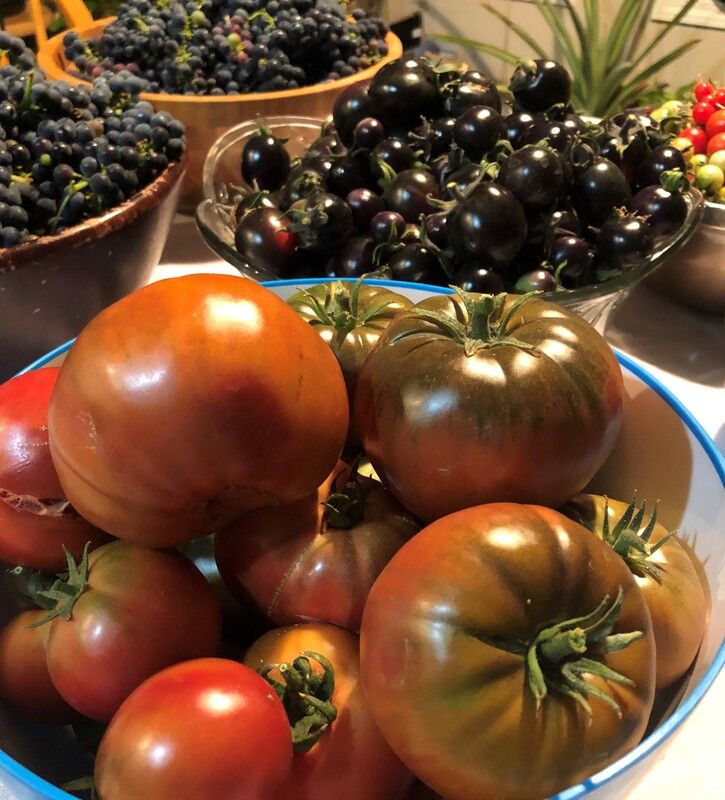
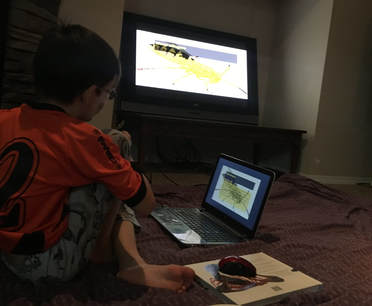
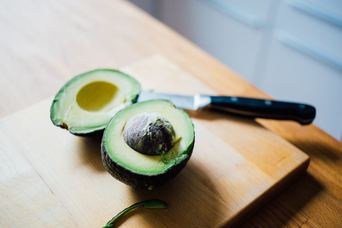
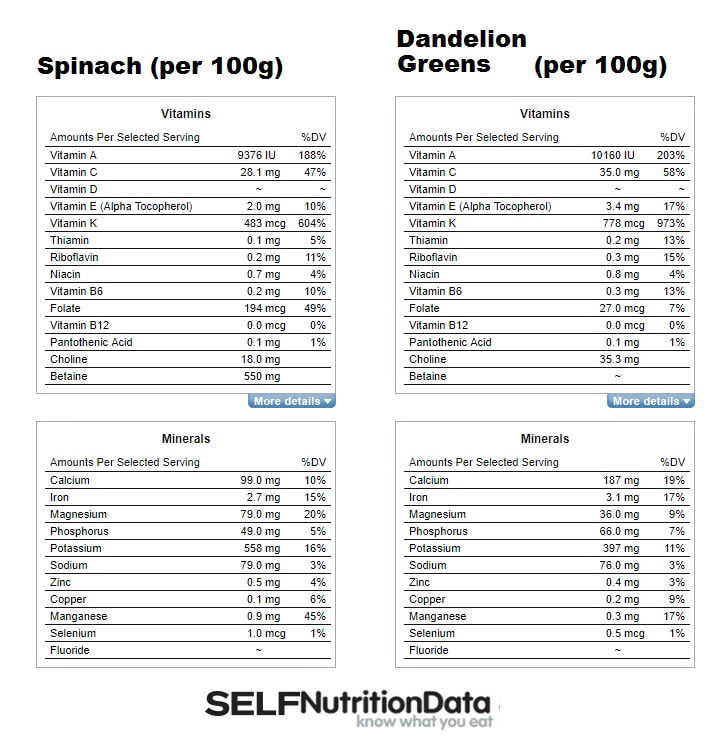
 RSS Feed
RSS Feed
